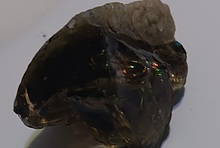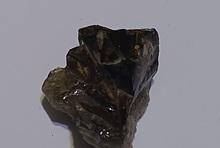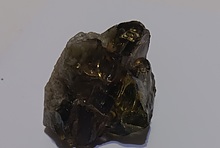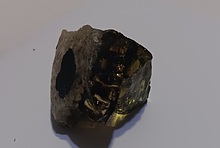Home PageAbout MindatThe Mindat ManualHistory of MindatCopyright StatusWho We AreContact UsAdvertise on Mindat
Donate to MindatCorporate SponsorshipSponsor a PageSponsored PagesMindat AdvertisersAdvertise on Mindat
Learning CenterWhat is a mineral?The most common minerals on earthInformation for EducatorsMindat ArticlesThe ElementsThe Rock H. Currier Digital LibraryGeologic Time
Minerals by PropertiesMinerals by ChemistryAdvanced Locality SearchRandom MineralRandom LocalitySearch by minIDLocalities Near MeSearch ArticlesSearch GlossaryMore Search Options
The Mindat ManualAdd a New PhotoRate PhotosLocality Edit ReportCoordinate Completion ReportAdd Glossary Item
Mining CompaniesStatisticsUsersMineral MuseumsClubs & OrganizationsMineral Shows & EventsThe Mindat DirectoryDevice SettingsThe Mineral Quiz
Photo SearchPhoto GalleriesSearch by ColorNew Photos TodayNew Photos YesterdayMembers' Photo GalleriesPast Photo of the Day GalleryPhotography
╳Discussions
💬 Home🔎 Search📅 LatestGroups
EducationOpen discussion area.Fakes & FraudsOpen discussion area.Field CollectingOpen discussion area.FossilsOpen discussion area.Gems and GemologyOpen discussion area.GeneralOpen discussion area.How to ContributeOpen discussion area.Identity HelpOpen discussion area.Improving Mindat.orgOpen discussion area.LocalitiesOpen discussion area.Lost and Stolen SpecimensOpen discussion area.MarketplaceOpen discussion area.MeteoritesOpen discussion area.Mindat ProductsOpen discussion area.Mineral ExchangesOpen discussion area.Mineral PhotographyOpen discussion area.Mineral ShowsOpen discussion area.Mineralogical ClassificationOpen discussion area.Mineralogy CourseOpen discussion area.MineralsOpen discussion area.Minerals and MuseumsOpen discussion area.PhotosOpen discussion area.Techniques for CollectorsOpen discussion area.The Rock H. Currier Digital LibraryOpen discussion area.UV MineralsOpen discussion area.Recent Images in Discussions
GeneralMindat Chemical Formulae: Inconsistency, Error, or Other?
3rd Feb 2019 19:43 UTCSteve Hardinger 🌟 Expert
It appears to me that parentheses are used to groups together atoms that together form an anionic unit, such as the molybdate in wulfenite, Pb(MoO4) or the tungstate in scheelite, Ca(WO4).
I see that parentheses are used to enclose an anion when the anion must be separated from other anions for the sake of clarifying arrangement and bonding, for example giving the formula or descloizite as PbZn(VO4)(OH) instead of PbZnVO4OH.
But what about calcite, whose formula is (invariably) written as CaCO3? Why not Ca(CO3) for the sake of consistency?
It might be argued that this is just an inconsistency that needs to be addressed here on Mindat (and elsewhere).
However (as someone once failed to convince me) that the parentheses are not used "everyone of course knows these atoms are grouped together." If so then what about people (beginners mostly, I assume) **don't** know? For the beginner the inconsistent use of parenthesis probably causes more confusion about mineral chemical structure and representation within chemical formulae than it causes clarity.
From a chemist's perspective (mine) CaCO3 is correct and Pb(MO4) is incorrect. However a chemist's rules for writing a formula depend upon what is being conveyed (and what is being conveyed is not always clear in the context of the writing). An inorganic chemist will agree with CaCO3 but an organic chemist (a chemist for whom carbon is most important) the correct way to write a formula is carbon first with all other elements in alphabetical order. Thus calcite becomes CCaO3. Of course the latter only gives the atomic ratios, and fails to suggest any aspect of molecular structure.
So I get that mineralogists and chemists may have different rules, but what about the inconsistency in just mineralogy?
3rd Feb 2019 19:49 UTCJolyon Ralph Founder
Occasionally I go in and remove them, and someone comes along and adds them back :)
3rd Feb 2019 19:49 UTCJolyon Ralph Founder
Occasionally I go in and remove them, and someone comes along and adds them back :)

3rd Feb 2019 19:59 UTCErik Vercammen Expert
3rd Feb 2019 20:27 UTCJolyon Ralph Founder
Why do we need that when we have the structure detailed on the page below it. IF you need to explain the structure of the minerals clearly the formula is not the place to do it!
3rd Feb 2019 20:47 UTCRalph S Bottrill 🌟 Manager
3rd Feb 2019 20:53 UTCUwe Kolitsch Manager
PS This was discussed several times before (use search option of the forum).
3rd Feb 2019 21:29 UTCFrank K. Mazdab 🌟 Manager
And as for the difference between "multiple oxides" and "anionic groups", the distinction has sometimes seemed a bit arbitrary to me. Spinel is a "multiple oxide" where Mg and Al sit in various tetrahedral and octahedral vacancies in a lattice of CCP oxygens; conversely, forsterite is a "silicate" where Mg and Si sit in various tetrahedral and octahedral vacancies in a lattice of HCP oxygens. What's the big difference? Ringwoodite, chemically [but not structurally] the same as forsterite, is a spinel but apparently isn't a multiple oxide like its brethren in the spinel family... it seems to be considered a nesosilicate, although maybe it shouldn't be? It seems in ABO4 compounds when one cation occupies a much larger coordination site than the other, the small one gets to be in an anionic group (e.g. VIIICa[IVWO4]), but when the two cations sit in similar or identical sized sites (VIFeVIWO4), the whole thing is a multiple oxide (but to be clear in this particular case, since W sits in a WO6 octahedron, bracketing the [WO4] would not convey a correct sense of the structure anyway).
In any case, VICa[IIICO3] may look busy for calcite, but it does nicely show what's going on... trigonal planar CO3 groups whose oxygens coordinate a much larger Ca. I'll keep including the brackets (and occasionally the C.N. too), but if others delete them, I'm nonetheless not so hardcore to feel I need to add them back in... I think... lol.
3rd Feb 2019 21:44 UTCFrank K. Mazdab 🌟 Manager
Without brackets, beginning students don't understand why NaAlSi2O6 is a pyroxene but seemingly similar KAlSi2O6 is a framework silicate.
Add in the brackets, and NaAl[Si2O6] jumps out as a [T2O6] mineral (a chain silicate), and K[AlSi2O6] jumps out as a [TxO2x] mineral (a framework silicate). Adding in C.N. makes the difference even more compelling (and addresses the sometimes question I get that the added brackets seem "arbitrarily placed").
If one of the goals of mindat is mineralogy education (and I believe it is), then there is something to be said for maybe adding the brackets/parentheses and potentially even some C.N. to what we view as even simple formulas.
Edit: and I agree the curly brackets around the {A1A2} and {M1M2M3} groups in the epidote group seem odd and out of place... perhaps just simple parentheses around those groups if the atoms are different (and omitted altogether if the constituent atoms are identical), as is done for the amphiboles.
3rd Feb 2019 21:45 UTCSteve Hardinger 🌟 Expert
3rd Feb 2019 21:56 UTCJolyon Ralph Founder
> Without brackets, beginning students don't understand why NaAlSi2O6 is a pyroxene but seemingly similar KAlSi2O6 is a framework silicate.
I think it's safer to say you can't deduce anything about the structure from the formula and give that as a good example - if people come to expect everything to be spoonfed to them with brackets and they come across forumlas written without them they'll soon end up in trouble.

3rd Feb 2019 22:06 UTCAlfredo Petrov Manager
3rd Feb 2019 22:26 UTCFrank K. Mazdab 🌟 Manager
Maybe it is spoon-feeding. But I guess all education starts as spoon-feeding. When people later come across a formula without brackets, they don't "get in trouble"... they apply knowledge and experience. It's their earlier exposure to the formulas with brackets that will allow them to figure what's going on with a new unfamiliar formula. Anyway, no worries... mindat may simply be a data repository and it's good to know there are other resources out there to get ancillary information (but it seems kind of unfortunate that it wouldn't all be here)... so to my surprise, mineralogy education may not be a focus of this site.
By the way, why do we include a birefringence value in the optical data? You know that can just be simply calculated by subtracting the high and low refractive indices... this spoon-feeding has got to stop... LOL.
3rd Feb 2019 23:27 UTCJolyon Ralph Founder
If you look at the structure of Wolframite/Ferberite all the oxygen surrounds the W, and each Fe is surrounded 6 [WO6] groups.
> Maybe it is spoon-feeding. But I guess all education starts as spoon-feeding.
I was being a little harsh. My concerns are that if we were to do our own thing with a formula convention that isn't generally followed in the scientific literature it would generate confusion.
Maybe we need to have multiple formula fields, a plain formula (which is probably the one collectors would put on their labels), and a structurally-divided formula.
Then I'd be happy to have CaCO3 and Ca[CO3] side by side, and we can all have everything we want.
But wait... there's another problem here...
Why aren't we doing
Ca2+[CO3]2-
At the moment we have no easy way of searching for minerals that contain an element at a specific oxidation state. Nor can we easily search for specific ions such as [WO4] (which shouldn't bring up ferberite!)
We need to think about not just something to be displayed, but something that can potentially contain hidden codes to allow us to index and search on these. We may not care to show that Calcium is always 2+, but we do want to be able in the future do a search for, eg, any oxychloride of a 2+ cation.
3rd Feb 2019 23:55 UTCFrank K. Mazdab 🌟 Manager
I appreciate your additional thoughts on this. An extra field or two as you suggest would seem to offer sufficient flexibility. For example, we already have IMA formula and "formula"... offering an additional "structural formula" field would be great.
And I hadn't considered how formal oxidation state is sometimes but not always presented, but agree that some way of accommodating it (whether hidden for searches, or in cases where there's a question about an element like Fe, Mn, Cr, etc., potentially both hidden and visually) would be useful.
4th Feb 2019 00:28 UTCVolker Betz 🌟 Expert
Mineral crystals are often not pure chemicals. So for example wulfenite from Mezica (Slovenia) is in reality about
Pb0.94Mo0.06[MoO4]
see;
http://www.academia.edu/download/46968074/On_the_symmetry_of_wulfenite_PbMoO4_fr20160702-7493-73hiyo.pdf
So writing formulas simple is just describing something ideal, not reality, loss of information and rather far from pcecision.
4th Feb 2019 01:18 UTCKeith Compton 🌟 Manager
Always thought I could simply look it up (e.eg: in Fleishers) if I didn't know or couldn't remember.
Now I'll never even be able to remember Calcite !! ))-:) Thanks J !!!
But seriously - perhaps it would be good to include alternate formulae - stay one or two steps ahead of the IMA

4th Feb 2019 02:03 UTCAlfredo Petrov Manager
I agree that we need multiple formulae options.
4th Feb 2019 12:22 UTCRalph S Bottrill 🌟 Manager
4th Feb 2019 17:14 UTCDonald Lapham 🌟

16th May 2019 12:29 UTCBenjamin Oelkers
CaCO3 →
ct:< Ca,1,2+,VI>an:<[< C,1,4+,III>],1,2-,VI>
Each position would be enclosed in <> (which is not already used in typical formulae), giving element or structural unit, stoichiometric coefficient, total charge, and coordination number in that order. Nesting can easily be done, unknown position can be filled with a placeholder (here ?). (Each?) cation and anion is preceded by ct: or an:, respectively.
Parsing for a simplified formula would ignore the third and fourth position of every entry as well as drop brackets with stoichiometric coefficient 1, giving the usual
CaCO3
Indication of valencies can be done by also using the third position of each entry (of course, whitelisting or blacklisting could be used to avoid unwanted "simple" valencies from showing). This would result in
Ca2+[C4+O32-]2- (all charges) or, e.g.,
Ca2+[CO3]2- (charges only for complete structural units).
Indication of coordination numbers can be achieved by using the fourth position of each entry. Again, some data might still best be left hidden, which could be filtered by blacklisting or some other method.
VICaVI[IIICIIIO3] (all c.n.)
VICaVI[CO3] (c.n. only for complete structural units).
Mixed sites could be represented in a similar way, based on the example above:
Pb0.94Mo0.06[MoO4] →
ct:< Pb|Mo,0.94|0.06,2+|?,VIII>an:<[< Mo,1,6+,IV>],1,2-,VIII>
Please note that this is only a rough idea, but it could be a starting point for a system that is easy enough to both automate and use manually and flexible enough to allow for automatic generation of various formulae and various search functions. You could also use simple strings, making data handling rather easy. Spaces after < in the examples above are only needed for the string to show correctly on the messageboard! ;-)

16th May 2019 16:19 UTCDonald B Peck Expert

16th May 2019 16:37 UTCBenjamin Oelkers
Of course, I agree that the main hurdle is to prepare formulae in the format needed. But quite a bit of that work could (more or less easily) be automated - maybe around 75%? (Just guessing here.)

16th May 2019 16:40 UTCBenjamin Oelkers

17th May 2019 02:38 UTCDoug Daniels
17th May 2019 03:44 UTCFrank K. Mazdab 🌟 Manager
-S-S-
It's the same as with the oxygens in hydrogen peroxide. All is still OK with pyrite... :-)

17th May 2019 07:40 UTCDoug Daniels
17th May 2019 08:49 UTCFrank K. Mazdab 🌟 Manager

17th May 2019 10:33 UTCCecil Cosse

17th May 2019 11:33 UTCBenjamin Oelkers
Thank you for commenting on this. Just to add some minor correction to the pyrite question: Pyrite is indeed VIFe2+VI[S2]2-, just as Frank said, but that makes each individual sulfur atom have a charge (or oxidation state, if you prefer) of -1: [S1-2]2-
Doug, you are certainly right that implementing such a system would be a lot of work. However, you would not need to give all possible information from the beginning, all fields could be filled with placeholders to begin with. Some script could then bring up formulae with missing information to someone willing to fill it in, maybe using a user-friendly UI of some description. I was really just playing around with ideas for a more powerful backbone for chemical formulae - in essence, no regular user should see any of that, but only enjoy the (easily automatable) output generated from it.
17th May 2019 20:59 UTCŁukasz Kruszewski Expert
I see that parentheses are used to enclose an anion when the anion must be separated from other anions for the sake of clarifying arrangement and bonding, for example giving the formula or descloizite as PbZn(VO4)(OH) instead of PbZnVO4OH.
But what about calcite, whose formula is (invariably) written as CaCO3? Why not Ca(CO3) for the sake of consistency?"
Both types of formulas are accepted, though using parentheses in case of simple salts like CaCO3, CaWO4, or PbMoO4 is not practiced in chemistry.
Also, a single way of writting chemical (or crystallochemical) formulas is non-existent. So is for the compound names. Even though IUPAC recommends some single names, there are almost always other names, that are treated like synonyms, and also unnecessary/spare names.
It might be argued that this is just an inconsistency that needs to be addressed here on Mindat (and elsewhere).
"However (as someone once failed to convince me) that the parentheses are not used "everyone of course knows these atoms are grouped together." If so then what about people (beginners mostly, I assume) **don't** know? For the beginner the inconsistent use of parenthesis probably causes more confusion about mineral chemical structure and representation within chemical formulae than it causes clarity."
Parentheses are, indeed, needed when there are more ions (both cations and ions), but one of their main role is strictly mathematical, i.e., if there are more than 1 ions per formula unit, e.g., in dolomite: CaMg(CO3)2.
"From a chemist's perspective (mine) CaCO3 is correct and Pb(MO4) is incorrect. However a chemist's rules for writing a formula depend upon what is being conveyed (and what is being conveyed is not always clear in the context of the writing). An inorganic chemist will agree with CaCO3 but an organic chemist (a chemist for whom carbon is most important) the correct way to write a formula is carbon first with all other elements in alphabetical order. Thus calcite becomes CCaO3. Of course the latter only gives the atomic ratios, and fails to suggest any aspect of molecular structure."
"CCaO3" is just another way of writing the formula. Personally I've never liked this formulation, because it mixes everything. I thus prefer crystallochemical formulas, e.g., in the case of alunogen:
* simplified formula: Al2(SO4)3*17H2O
* crystallochemical formula: [Al2(H2O)6]2(SO4)3*5H2O
The latter formula not only explains how are the Al3+ cations surrounded, but also diversifies water into structural (or tightly-bound) water and crystallization water. The latter formulation also expresses thermal behaviour of such compounds, which first give-off the second H2O type, and then the first one.
18th May 2019 08:50 UTCJolyon Ralph Founder
> (or oxidation state, if you prefer) of -1
I think that when you're looking at the S2 in pyrite it doesn't make any sense whatsoever to say that the individual sulfur atoms have a charge of -1 because they are not individuals!
Is the charge of Carbon in Calcium Carbide CaC2 -1 also?
It may be true statistically and for certain calculations but it absolutely not a real explanation of how the carbon is bonded.
When I do the anion/cation search there won't be any option to select S-1 but there will be for S-22.

18th May 2019 10:10 UTCBenjamin Oelkers
The oxidation state (which I should have exclusively referred to) of sulfur in pyrite is -I, that is just a result of the stoichiometry. The same goes for CaC2 - carbon is in the oxidation state -I.
However, that does not mean that such ions can exist in isolated form, compare methane, for example: carbon has the oxidation state -IV in this case! The oxidation state does not even imply that there is a meaningful way to break a compound down into the corresponding ions - again, compare the methane example.
The real charges on each atom, on the other hand, are usually not very nicely defined in condensed matter. For very ionic bonding, we expect to "see" (either measure or calculate by theoretical means) high (effective) charges on anion and cation, respectively. Still, there is always some contribution of covalent bonding even in sodium chloride, resulting in effective charges of slightly less than 1+ and 1-. That is why we just draw a line somewhere between ionic compounds, for which we only account for ionic bonding and round the charges up to nice whole numbers (NaCl), and covalent compounds, for which we only account for covalent bonding and round the charges off to zero (CH
So, in conclusion: There is no isolated S- ion in pyrite (or likely anywhere else in condensed matter), the oxidation state of sulfur is -I, the formal charge of the disulfide anion is 2-, and the real/effective charge of sulfur in pyrite is very likely even less than 1-, because there is quite some metallic character to this compound, suggesting less localized electrons - of course, that also means that the effective charge on iron is also less than 2+.
18th May 2019 11:45 UTCFrank K. Mazdab 🌟 Manager

18th May 2019 11:52 UTCBenjamin Oelkers
Schmøkel et al., Chemical Science 2014, 5, 1408-1421 (DOI: 10.1039/c3sc52977k).
They conclude that the effective charge on sulfur is about -1/3 and that on iron about +2/3 instead of -1 and +2 as a purely ionic bonding would suggest. I find it intriguing to see how much our simplified interpretation of bonding can sometimes deviate from in-depth studies!

18th May 2019 11:58 UTCBenjamin Oelkers
18th May 2019 12:02 UTCŁukasz Kruszewski Expert
you may also want to check some Cu sulfides pages. Some years ago I've introduced some informations about the "extended" formulas, which show distribution of various Cu states. But there is more... Similar charge issues have to do with... fluorite.... Quite recently some Polish studies have shown, that Ca "is not 2+" and F "is not 1-" in CaF2:
https://www.ncbi.nlm.nih.gov/pubmed/28762974
But this all only confirms, that there is no a SINGLE formula representation of any particular structure.
I this field, I like Robert A. Wilson and his anti-IS ideas: there is nothing like "IS" in science, actually. There MIGHT BE.... or things ARE SUPPOSED TO BE, etc.
18th May 2019 12:03 UTCŁukasz Kruszewski Expert
18th May 2019 12:12 UTCFrank K. Mazdab 🌟 Manager

18th May 2019 12:47 UTCBenjamin Oelkers
thank you for the link, that will certainly be a nice read.
For me, using oxidation states is a powerful tool as long as you keep in mind that it is a simplification derived to fit numerous cases and uses, but without any strict physical meaning. That is also why in chemical training, you will usually be faulted for using "oxidation state" and "charge" interchangeably... :-)
Frank,
I strongly support using brackets to differentiate between alumosilicates and aluminium-containing silicates!
18th May 2019 13:20 UTCJolyon Ralph Founder
BUT.. we're really missing the whole point of this.
The main point is to be able to search, for example, for minerals with Mn4+ instead of Mn2+, or for minerals that contain sulfite groups, etc etc.
My problem with putting [ ] in formula to help amateur mineralogists appreciate the difference between minerals has always been that the if you're looking at the formula alone to tell this you're really doing it wrong! In the case of the aluminosilicates that Frank brings up I really don't mind too much, but we do need some better way of dealing with this in general.
The concept of an encoding system for formulae that allows a more complex structural formula and a 'simple' formula to be generated from the same data is very appealing. The big concern is the work involved in converting 5500+ entries into this syntax.
I like the idea also of having something interactive. remember, we're on a computer, this isn't a book.
So, perhaps you could have a formula displayed as
CaWO4
but when you move your mouse over the different elements in the formula (or touch them on a touch device) they are highlighted and explained, and you can click a button to switch it to a more detailed format.
Trying just to throw a few brackets and parentheses in to the formulas in the hope that somehow that's going to explain everything isn't going to work!
18th May 2019 17:15 UTCŁukasz Kruszewski Expert
18th May 2019 17:23 UTCŁukasz Kruszewski Expert
I think we also need to remember that there are cases in chemistry when some simple anions are reported in square brackets. A good example here is the silicates. I must say I do not see a need of putting them in square brackets and not in the standard ones, but I assume this might have to do with the nature of the silicate anions (i.e., a lacking confirmation of the true presence of at least some of the siliceous acids), but I may be wrong here.




Mindat.org is an outreach project of the Hudson Institute of Mineralogy, a 501(c)(3) not-for-profit organization.
Copyright © mindat.org and the Hudson Institute of Mineralogy 1993-2024, except where stated. Most political location boundaries are © OpenStreetMap contributors. Mindat.org relies on the contributions of thousands of members and supporters. Founded in 2000 by Jolyon Ralph.
Privacy Policy - Terms & Conditions - Contact Us / DMCA issues - Report a bug/vulnerability Current server date and time: April 19, 2024 05:29:59
Copyright © mindat.org and the Hudson Institute of Mineralogy 1993-2024, except where stated. Most political location boundaries are © OpenStreetMap contributors. Mindat.org relies on the contributions of thousands of members and supporters. Founded in 2000 by Jolyon Ralph.
Privacy Policy - Terms & Conditions - Contact Us / DMCA issues - Report a bug/vulnerability Current server date and time: April 19, 2024 05:29:59











